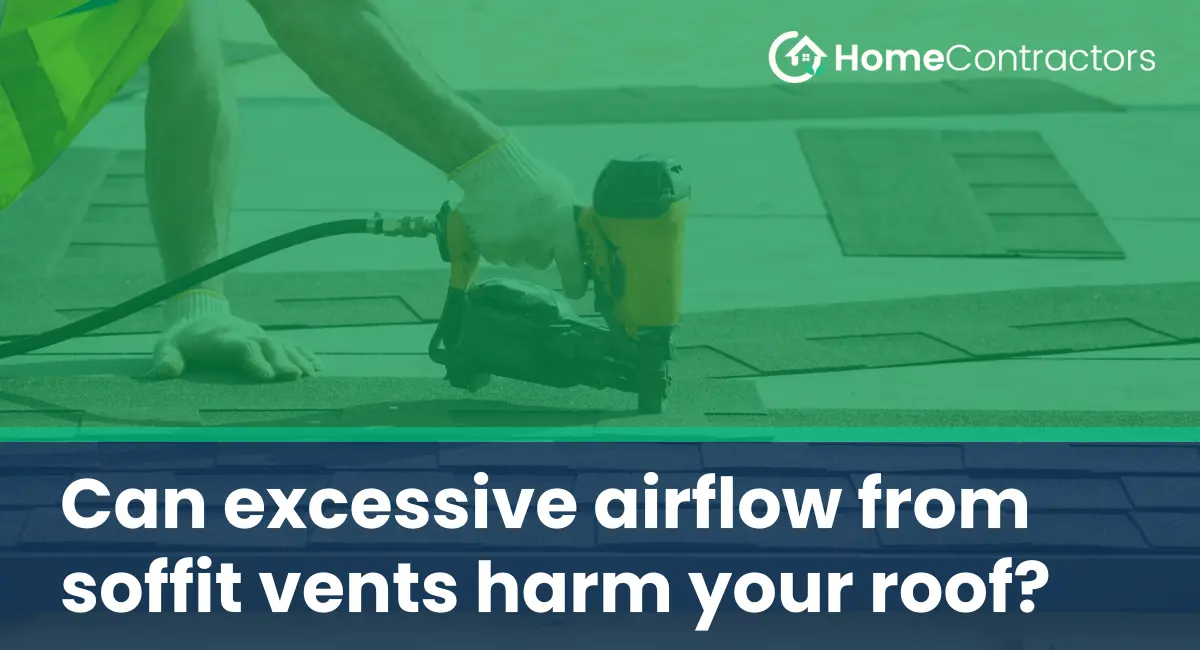Soffit vents are an essential component of a roof ventilation system. They allow air to flow into the attic space from the soffit, which is the underside of the roof overhang. Proper roof ventilation is crucial for the overall health and longevity of the roof. However, excessive airflow from soffit vents can potentially harm the roof if not properly managed. In this article, we will explore the potential risks of excessive airflow from soffit vents and discuss ways to mitigate those risks.
Understanding the Role of Soffit Vents
Soffit vents are designed to provide a constant flow of air into the attic space, promoting proper ventilation. Without adequate airflow, the attic can become hot and humid, leading to a variety of issues such as mold and mildew growth, rotting of the roof structure, and deterioration of insulation. Soffit vents work in conjunction with other ventilation components, such as ridge vents or gable vents, to maintain a continuous flow of air through the attic.
The Importance of Proper Roof Ventilation
Proper roof ventilation has several benefits, including:
- Moisture Control: Excessive moisture in the attic can lead to the aforementioned issues like mold growth and decay. Proper ventilation helps to remove excess moisture, keeping the attic dry and preventing damage.
- Energy Efficiency: Adequate airflow helps to regulate the temperature of the attic, preventing heat buildup. This, in turn, reduces the strain on heating and cooling systems, leading to energy savings.
- Roof Longevity: A well-ventilated attic can prolong the life of the roof by preventing the shingles from overheating and deteriorating prematurely.
Risks of Excessive Airflow
While proper ventilation is essential, excessive airflow from soffit vents can pose risks to the roof. Some of the potential issues include:
- Accelerated Heat Loss: Excessive airflow can cause significant heat loss from the attic during colder months. This can lead to increased energy consumption and uncomfortable living spaces.
- Moisture Infiltration: When there is excessive airflow, it can create negative pressure inside the attic, pulling air from outside. This can result in the infiltration of moisture, especially during rainstorms or snowfalls, which can lead to water damage and rotting.
- Shingle Lifting: Strong winds can penetrate through the soffit vents and create uplift forces on the shingles. This can cause the shingles to lift or become damaged, making them more susceptible to leaks and other weather-related issues.
Preventing Excessive Airflow
To prevent excessive airflow from soffit vents and mitigate the associated risks, certain measures can be taken:
- Soffit Baffles: Installing baffles between the soffit vents and the insulation can help regulate the airflow. These baffles ensure a clear path for ventilation while preventing excessive airflow.
- Proper Sizing: Soffit vents should be appropriately sized to match the ventilation needs of the attic. Consult a professional to determine the right size and number of vents for your specific roof.
- Insulation: Adequate insulation in the attic will help maintain the desired temperature and prevent excessive heat loss. Proper insulation will also act as a barrier against moisture infiltration.
Soffit vents play a crucial role in roof ventilation, maintaining a healthy attic environment and promoting the longevity of the roof. While proper ventilation is essential, excessive airflow from soffit vents can pose risks to the roof, such as accelerated heat loss and moisture infiltration. By implementing measures like baffles, proper sizing, and insulation, homeowners can prevent excessive airflow and ensure a well-functioning roof ventilation system. Consulting a professional roofer or contractor is advisable to assess the specific ventilation needs and maintain a balance between airflow and prevention of potential harm to the roof.
